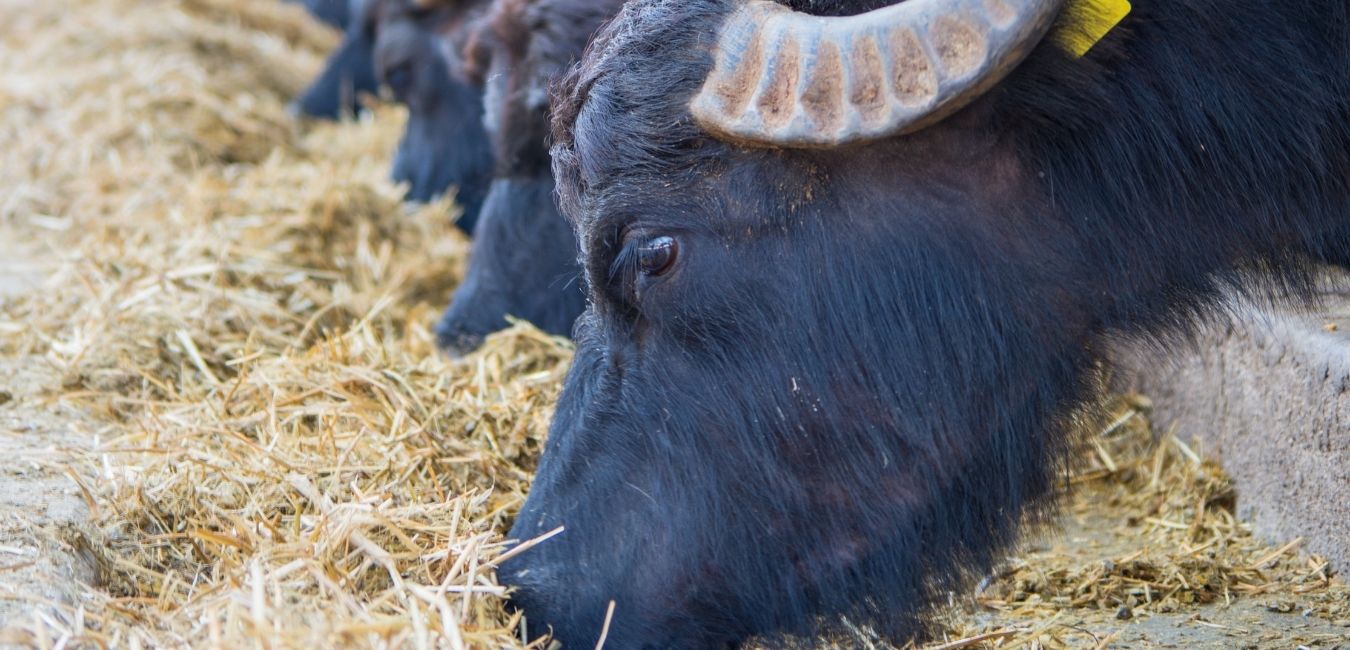How does it work?
The mechanism of work:
It regulates rumen microbiota population (and activity) in a targeted way, including
- the boosts the lactic acid utilization into propionate
- enhances propionic SCFA production, keeping in balance acetate/propionate/butyrate ratios
- keeps blood glucose high enough to reach and sustain higher yields
By utilizing hydrogen (generated by fermentation of feed ingredients) into the propionate path, pH in the rumen is kept high enough to allow bacteria to stay active and grow enough for optimal fermentation of feed ingredients. Normally hydrogen is utilized by methane generating archaea, resulting in enteric methane production.
Sustainability. Our technology redirects the process of hydrogen utilization to propionic SCFA production. Thus, the enteric methane production per unit of milk decreases in reverse proportion to the increased production of propionate.
Milk Production and Cost Reduction. Propionate is a precursor of blood glucose in gluconeogenesis taking place in the liver. This increase in propionate synthesis at low starch concentrate levels leads to higher milk yields, decreased milk feed costs (and lower methane emission). These are the benefits that directly impact profitability at the farm.

By solving metabolic disorders you get:
- Increase of productive longevity
- Regulation of energy balance by supporting the healthy functioning of the digestive system (rumen, intestine, liver), getting animals rid of insulin resistance
- Improvement of the immune system, reduce cases of mastitis nutritionally induced disorders
- Improvement of the milk quality
- Fat and protein remain at high levels even at times of feed and heat stress
The content of trans-isomers of fatty acids in milk decreases
- The Somatic cell count reduces.
Health benefits:
- significantly lower culling rates
- no sub-acute acidosis
- improved fertility rates
- lower embryonic death rates
reduction of mastitis cases and other typical diseases for buffalos at high concentrate diets.
These health benefits also impact positively on your net cash flow and improve your return on capital.

Gastrointestinal tract:
Colonization by lactic acid bacteria and the specific action of polysaccharides leads to
- the formation of an active structure of the intestinal mucosa, which can absorb 20% more calcium. When exposed to the microflora of the large intestine, polysaccharides with a length of 15-22 carbohydrate fragments break down into the following short-chain fatty acids: acetate, propionate, butyric and valerianic acids. As these acids play an important role in the metabolism of ruminants, they are also known as the main source of glucose in the blood in the case of energy deficiency which facilitates the elimination of diarrhea, improves the intestinal status, increases immunity, and survival rates.
- inhibition of growth of necessary biota and displacement of pathogenic producing toxins microorganisms, and putrefactive bacteria in particular. A decrease in the concentration of endogenous toxins and ammonia has a positive effect on the well-being of the animal.
It all removes molasses from the ration of buffalos and reduces the consumption of concentrates by 15-20% in a month. Enriches with easily digestible carbohydrates, dietary fiber, polyunsaturated fatty acids, and phospholipids. The Regulatory Polysaccharide Complex has an affordable price, which makes it possible to enrich the ration of farm animals.